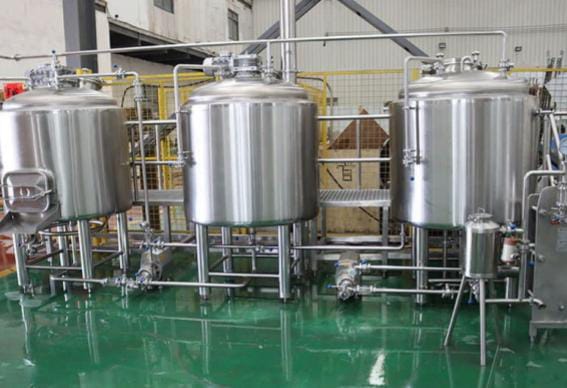This article explores the latest trends in nano brewery equipment, why they matter, and how they’re shaping the future of small-scale brewing.
Understanding the Nano Brewery Landscape
Before diving into equipment trends, it’s important to define what makes a nano brewery different. Generally, a nano brewery is classified as producing less than three barrels of beer per batch. This small output allows brewers to experiment with recipes, cater to local tastes, and pivot quickly in response to consumer demand.
Because of their scale, nano breweries don’t need the massive equipment of large craft breweries or industrial beer manufacturers. Instead, they require compact, versatile, and efficient brewing systems that make the most of limited space and budget. Equipment suppliers have recognized this need, and their innovations are reshaping the brewing process for nano brewers.
Trend #1: Compact, Modular Brewing Systems
One of the biggest changes in nano brewery equipment is the shift toward modular brewing systems. Traditional breweries often rely on massive, stationary tanks that require significant space and infrastructure. For nano breweries, that’s neither practical nor cost-effective.
Modular systems are designed to be scalable—brewers can start small with just a few tanks and expand as demand grows. This approach reduces upfront investment while providing flexibility for future growth.
Some modular systems are also designed to be portable, allowing breweries to set up in limited or nontraditional spaces such as restaurants, taprooms, or shared facilities. This makes it easier for new brewers to enter the market and test their ideas without overcommitting resources.
Trend #2: Automated Control Systems
In the past, brewing beer required constant manual attention—monitoring temperatures, timing the mashing process, and transferring wort between tanks. Today, automation is increasingly common even in small-scale brewing.
Modern nano brewery equipment often integrates digital control systems that allow brewers to:
- Set precise temperatures and timings
- Monitor brewing progress remotely via smartphones or tablets
- Record data for consistency and compliance
- Reduce labor and human error
Automation not only saves time but also ensures consistency in flavor and quality, which is critical as nano breweries grow and expand distribution.
Trend #3: Sustainable Brewing Equipment
Sustainability is no longer just a buzzword; it’s becoming a necessity. Consumers are increasingly eco-conscious, and breweries of all sizes are expected to minimize their environmental impact.
Nano breweries, in particular, are investing in equipment that:
- Recycles water used in brewing processes
- Reduces energy consumption with insulated tanks and efficient heating systems
- Minimizes waste through innovative wort recovery methods
Some systems are even designed to capture and reuse CO₂ produced during fermentation, cutting down greenhouse gas emissions.
These sustainable brewing solutions not only benefit the planet but also help nano breweries reduce operational costs in the long run.
Trend #4: Customization and Bespoke Equipment
Another emerging trend is the demand for customized brewery equipment. Unlike larger breweries, nano brewers often have unique needs based on their recipes, available space, or local market demands.
Manufacturers are responding by offering:
- Custom tank sizes and shapes
- Flexible piping and valve configurations
- Specialized fermenters for small-batch experiments
- Equipment designed for multi-use (e.g., tanks that can serve as fermenters or brite tanks)
This level of customization allows brewers to optimize their workflow and create beers that stand out. Companies like Micet Craft specialize in providing tailored solutions for breweries of all sizes, including nano breweries.
Trend #5: Hybrid Brewing Equipment
Nano breweries often face the challenge of limited resources. To overcome this, many are turning to hybrid brewing equipment that can perform multiple functions.
For example:
- Combination mash/lauter tuns save space and reduce equipment costs.
- Dual-purpose fermenters can act as both fermenting and conditioning tanks.
- Compact glycol chillers can support both fermentation control and cold storage.
This hybrid approach streamlines production, reduces costs, and makes it possible for brewers to experiment more without investing in multiple specialized systems.
Trend #6: Focus on Quality Control and Consistency
While creativity is at the heart of craft brewing, consistency is what keeps customers coming back. Nano brewers are investing in quality control equipment to ensure that each batch meets their standards.
Some popular investments include:
- Digital hydrometers and refractometers for precise gravity readings
- Advanced filtration systems for clarity and flavor stability
- pH meters and titration equipment for water and wort adjustments
With these tools, nano brewers can maintain professional-grade quality even at a smaller scale.
Trend #7: Direct-to-Consumer and Taproom Integration
Many nano breweries are built around a taproom-first model, where customers can enjoy freshly brewed beer on-site. To support this, equipment suppliers are offering systems that integrate production and serving.
Examples include:
- Compact kegging systems designed for small-batch packaging
- On-site canning lines suitable for nano-scale production
- Taproom-integrated fermenters that allow beer to go directly from the tank to the tap
This trend allows brewers to minimize packaging costs, reduce waste, and deliver the freshest beer possible.
Trend #8: Globalization of Equipment Supply
Thanks to the internet and international trade, nano brewers now have access to a global marketplace for equipment. High-quality brewing systems are no longer limited to local suppliers—brewers can source equipment from specialized manufacturers around the world.
For example, Micet Group has established itself as a global supplier of brewing equipment, serving both large-scale breweries and small nano operations. This globalization has increased competition among suppliers, driving innovation and lowering costs for brewers.
Trend #9: Emphasis on Safety and Compliance
As nano breweries grow, they often move from home-brewing setups into commercial spaces. This transition requires compliance with local safety and health regulations. Equipment suppliers are now building systems with compliance in mind, including:
- Food-grade stainless steel construction
- CE and UL certifications
- Sanitary fittings and CIP (clean-in-place) systems
- Explosion-proof electrical components for hazardous environments
By investing in compliant equipment, nano brewers can avoid costly regulatory issues and build customer trust.
Trend #10: Training and Support Services
Finally, nano brewers aren’t just buying equipment—they’re also seeking ongoing training and technical support from suppliers. The best equipment providers now offer:
- Virtual and on-site training for staff
- Recipe development consulting
- Troubleshooting hotlines and after-sales support
- Extended warranties and service agreements
This trend highlights the growing recognition that brewing equipment isn’t just a purchase—it’s a partnership between manufacturer and brewer.
Conclusion
The rise of nano breweries has transformed the brewing landscape, offering unique opportunities for creativity, community, and entrepreneurship. To support this movement, equipment manufacturers have stepped up with innovative solutions that make brewing more efficient, sustainable, and accessible than ever before.
From modular systems to sustainability innovations, nano brewery equipment continues to evolve alongside the needs of brewers. By staying on top of these trends, nano brewers can position themselves for long-term success in an increasingly competitive market.Registered Business Address
FAQs
1. What is the difference between nano brewery equipment and microbrewery equipment?
Nano brewery equipment is designed for very small production volumes, typically less than three barrels per batch. Microbrewery equipment, on the other hand, supports larger outputs (up to 15,000 barrels annually) and requires more space and infrastructure.
2. How much does nano brewery equipment typically cost?
The cost of nano brewery equipment can vary widely based on size, customization, and features. Basic starter systems may cost between $20,000 and $50,000, while more advanced automated systems with custom features can range from $70,000 to $150,000 or more.
3. Can nano brewery equipment be scaled up as the brewery grows?
Yes, many modern nano brewery systems are modular and scalable. This allows brewers to start small and add additional tanks, fermenters, or automation features as their production capacity and customer demand increase.



